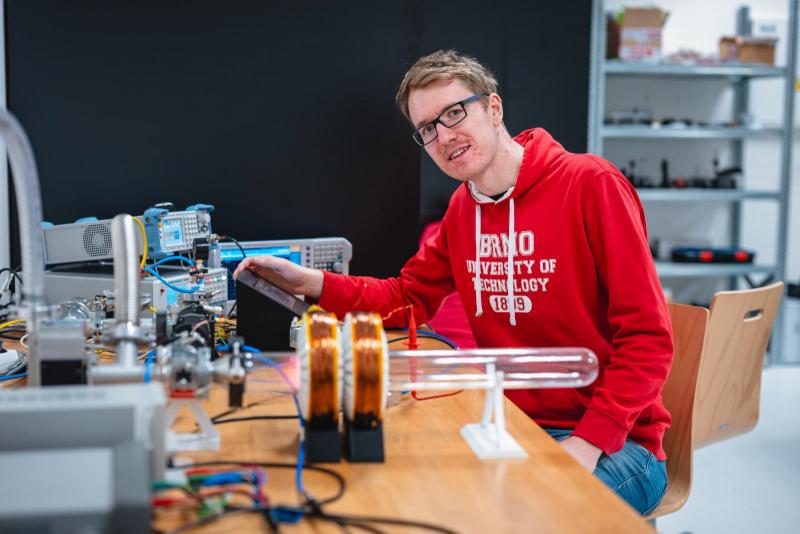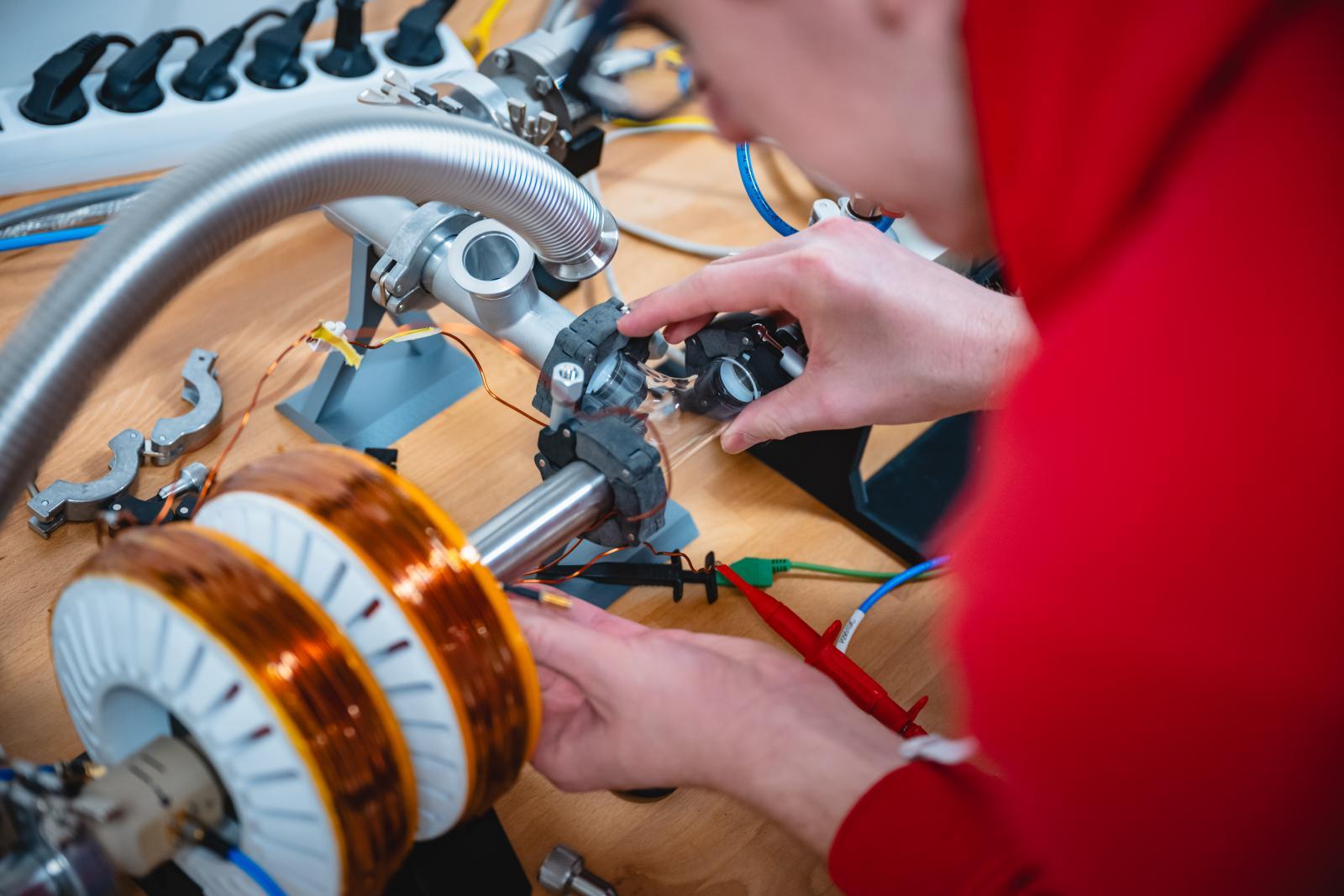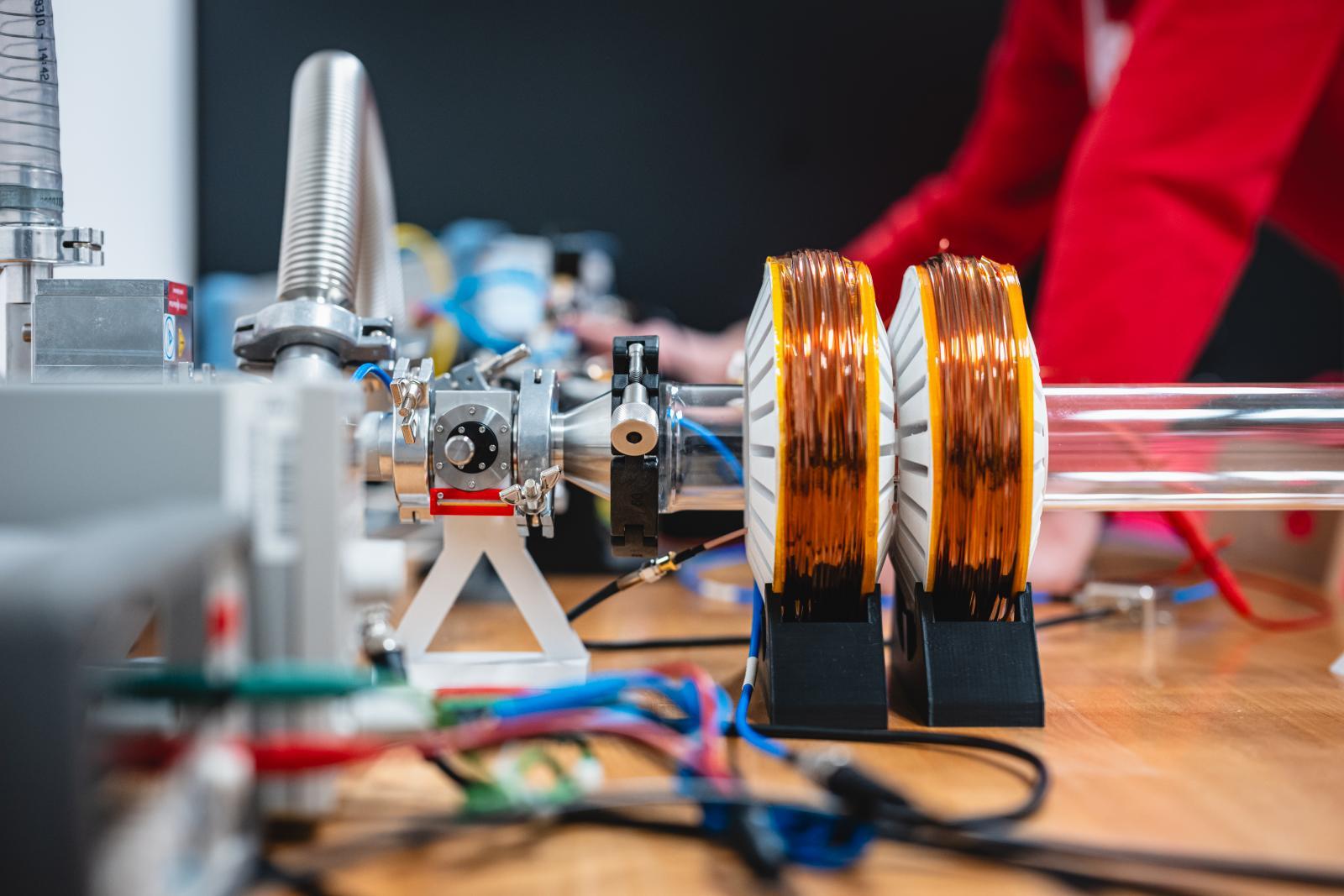Ideas and discoveries
5 March 2024
Greater efficiency and completely new applications. Experts from FEEC BUT also collaborate on satellites for very low orbit

Doctoral student Karel Juřík from the Institute of Theoretical and Experimental Electrical Engineering of FEEC BUT is working on the creation of a low-pressure plasma source for powering satellites. The project, in which several commercial companies and experts from Masaryk University in Brno are involved, aims to construct a satellite that can be operated in a lower orbit for a long time. According to Juřík, this would bring completely new possibilities, such as connecting to satellite internet anywhere and anytime, but also a more considerate approach to the environment when operating and disposing of satellites.
The plasma generator, which is based on the creation of ions with the help of high-frequency electromagnetic energy, is being developed at the Institute of Theoretical and Experimental Electrical Engineering FEEC BUT. This plasma source should be part of the satellite and power it. “Satellite electric propulsion has been around for a long time and is commonly used by satellites. At the same time, they all have in common that they carry a supply of gas, from which they then create ions. However, the supply is of course limited and the engine is usually only used for some short manipulation, trajectory refinement and manoeuvres," explains PhD student Karel Juřík, who in Petr Drexler's team focuses on the development of the generator. "If the engine should serve as a continuous drive, the satellites will last only a short time," he adds.
They are working on a satellite that could be operated in lower orbits. "However, there is still a residual atmosphere there, which would cause the satellite to fall in a very short time if it had no propulsion. If the drive is there, but it will be the existing conventional one, then with normal gas volumes the mission would be very short. In months, maybe weeks. Which, of course, is not commercially viable, Juřík explains.

The company SpaceLab EU therefore came up with the idea of collecting atoms of the residual atmosphere. "These could be ionized and used to create plasma, which in the ideal case would mean an unlimited lifetime of the satellite," notes Karel Juřík, adding that the lifetime would of course be limited. For example, by obsolescence of the used technologies or corrosion. "However, the operating time would still be significantly longer," he confirms.
It is SpaceLab EU that is the main researcher of the project, which last year also received a grant from the Technology Agency of the Czech Republic. "Other co-investigators are the Brno-based company PlasmaSolve, which does simulations of plasma and the interaction of fields with plasma. And we deal with the high-frequency part and its physical implementation. We are trying to create a source so that it has a high efficiency of transferring electromagnetic energy to ions and at the same time is able to work at low pressures, which is the key thing of the whole project," explains Juřík.
Whether their proposed solution will work, no one can say for sure. "There are several question marks. On the one hand, at the heights where we would like to move, the atmosphere is already partially ionized or atomized. The second thing is that if the satellite flies, it will have some relative velocity with respect to the particles. These are all factors that need to be considered, but which are not yet possible to test," says Karel Juřík, and his words are confirmed by Petr Drexler. "From what we know, no one is able to test it in a qualified manner right now. This is going to be a big surprise. However, we have simulations and they tell us that it should work. We will have an experiment in the future, but we must already have a prototype satellite for that," he adds.

According to Juřík, there is a simple explanation for why scientists are concentrating on lower orbits. It offers several advantages. "In lower orbits, we would like to use satellites, for example, because they will be closer to the Earth, which offers better resolution in the case of the placement of optical instruments, lower latency in the case of communication. But at the same time, it could bring completely new ways of use. For example, there would be no need for an external receiver, and every mobile could thus connect to satellite internet anywhere in the world practically immediately," explains Karel Juřík and adds: "Another factor is environmental. The orbits as they are used now are getting crowded. And if there was any collision, it would make the overcrowding even worse. There would be a lot of debris that would move there unpredictably and threaten other satellites. This would have far-reaching consequences because we as a human being are very dependent on satellites.” These problems cannot occur in lower orbits. "When the satellite stops working there, it will start to fall within a few weeks and burn up safely in the atmosphere. Of course, it must be properly designed so that it does not fall to Earth and injure no one, but burns up on the way down. The track will thus clean itself of old satellites," explains Juřík.
According to him, the entire solution also has future applications that we are not even able to see yet. "However, we know that once the satellite is successfully launched, it will be possible to implement a lot of new things," concludes the PhD student.
(zeh)
Scientists from FEEC BUT are participating in the development of a smart intersection. This could make transport more efficient and ensure greater safety
Swarm of unmanned drones with ground robots to help army survey hazardous areas
YSpace succeeds in prestigious ESA programme and heads to space
Optical fibres will help peek into the deepest parts of the brain. A doctoral student from FME is involved in the research
Antibiotic resistance in the poultry microbiome is investigated by FEEC BUT